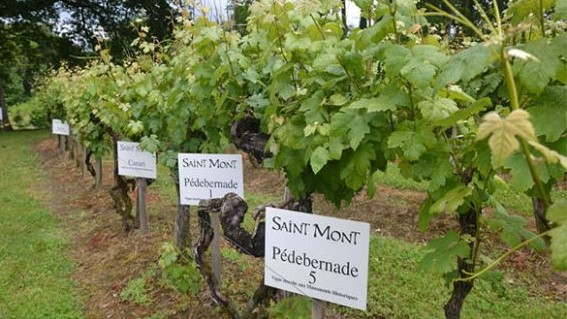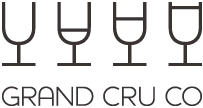Lost wine grape ‘Tardif’ may protect against climate change
A 'long lost' wine grape has been listed on the official French register amid claims that it could help winemakers to withstand the effects of climate change.
A grape known as ‘Tardif’ in south-west France and which survived the phylloxera epidemic that plagued Europe’s vineyards in the 19th Century has been given a new lease of life via a listing on France’s official wine grape register.
It’s thought that Tardif’s late ripening qualities might give winemakers more options when faced with higher temperatures that are expected this century due to climate change. It is a slow grower, often reaching peak ripeness around the end of October to early November, said Plaimont Producteurs, the wine co-operative that lobbied for Tardif to be listed.
That could be an advantage in areas with long, hot summers and autumns, although it was unclear how the grape would fare in a more maritime climate with greater rainfall. Tardif is believed to be native to Gascony, but its family history was not clear.
‘We are delighted that we can reintroduce an indigenous grape variety of such high quality,’ said Nadine Raymond, Plaimont winemaker for re-discovered grape varieties. ‘The nursery is coming along nicely and we are looking forward to planting it next spring.’
Around 1,500 Tardif vines will be planted and commercial production could begin after the 2020 harvest. Tardif is known for its peppery and spicy notes, Plaimont said. Plaimont has been cultivating Tardif non-commercially after first discovering it in the Pédebernade vineyard in the Gers village of Sarragachies in south-west France.
The 200-year-old vineyard was declared a historic French monument in 2012, because of the range of rare and old grape varieties growing there. It is one of the only sites to have remained unaffected by the phylloxera pest that decimated French vineyards in the late 19th Century and eventually forced many producers to rely on American rootstock for survival. It’s thought that the Pédebernade vineyard’s sandy soils provided a barrier to the pest.
Brexit pain as wine prices rise further, says trade
There has been no let-up in the run of price rises on wine since the UK voted to leave the European Union and the pain may be about to get worse, according to the latest figures from the Wine & Spirit Trade Association.
The average price of a bottle of wine in the UK rose to £5.58 between the Chancellor’s Budget in March and 17 June 2017, up 4% on the previous year, said the WSTA. Its statement coincided with Parliament’s first reading of a Brexit divorce bill that would transfer EU rules into UK law.
Average wine prices had already passed the £5.50 mark for the first time in the final three months of 2016, according to figures from the Wine & Spirit Trade Association (WSTA).
While this run of price rises may not immediately impact drinkers of premium and fine wines, the WSTA warned that the entire industry is facing a ‘triple whammy’ of price pressures going into the autumn.
‘For the first time we can see the how prices have been affected by the triple whammy resulting from Brexit’s impact on the pound, rising inflation and the 3.9% inflationary duty rise on alcohol imposed by the Chancellor at his Budget in March,’ said the WSTA, which is holding its annual conference in London today (12 September).
‘I am sad to say the pain doesn’t end here,’ said the WSTA’s chief executive, Miles Beale. ‘The Autumn Budget is set to see alcohol duty rise by inflation once again,’ he added, calling for a ‘time out’ on tax rises.
The WSTA said that it commissioned a YouGov poll that found four out of every five respondents concerned about the prospect of paying higher prices for food and drink. The WSTA has committed to working with the government in order to achieve the best possible deal in Brexit negotiations.
Weather a Challenge for Italy's Growers
The grape harvest is well underway throughout Italy's wine regions, and to label this year's crop as challenging would be a major understatement.
Torrid heat and a serious drought (especially in the north) have combined to bring about intense grapes, most of which are being picked two to three weeks ahead of schedule. Thankfully, some recent rains helped slow things down so, while 2017 may not be an outstanding vintage, it certainly will be better than the disaster some had predicted only a month ago.
The region of Piedmont offers an apt analysis of this year's unusual growing season, as Stefano Chiarlo, winemaker for Michele Chiarlo, can explain. He notes that after a very mild winter with not much snow, vegetation started a bit early in March, which was followed by cold, windy days in April. A good amount of rain fell in April and May, but from June until early September, it was a long, hot summer, especially in the province of Asti, which affected growth of Barbera and Moscato in that zone.
Hail, always a threat in Piedmont, hit the commune of Neive in the Barbaresco production zone, quite hard in April. Valter Fissore, winemaker at Elvio Cogno, reported that he lost 40 percent of his Nebbiolo at the Bordini cru in Neive; other vintners in this locations suffered even higher percentages of damaged vines.
Drought conditions were a key factor in understanding this year's growing season in Piedmont, as Andrea Roccione of Scarpa winery in Nizza Monferrato explained. "The 2017 harvest comes after two vintages, 2015 and 2016, that were also quite dry. The water reservoir from 2014, a rainy year, had run out after the past two years. So this vintage has been particularly complicated because of that."
Combine that with extreme heat – this June was the hottest on record in Piedmont – and you have accelerated growth in the vineyards, resulting in lower acidity, as well as a loss in varietal aromatics. "In order to survive, the vines have started to suck their own pulp," says Roccione. "So what you get from the vine are dried-out grapes that are highly concentrated, but also a very poor harvest, because you don't get much out of the vine."
Thankfully, about two inches of rain fell throughout much of Piedmont on September 1, the first precipitation in some areas in almost two months. Temperatures, which had been more than 100 degrees the last few days of August, dropped to a more typical range of high 70s to low 80s, allowing for at least a slight delay in ripening. Harvest did start the last week of August, with Moscato and then some Dolcetto; both varieties were being picked at the Poderi Colla estate in Barbaresco on August 29. Proprietor Tino Colla seemed pleased with this initial crop, stating that "regarding acidity, it will not be too high, obviously, but it will not be too low either".




